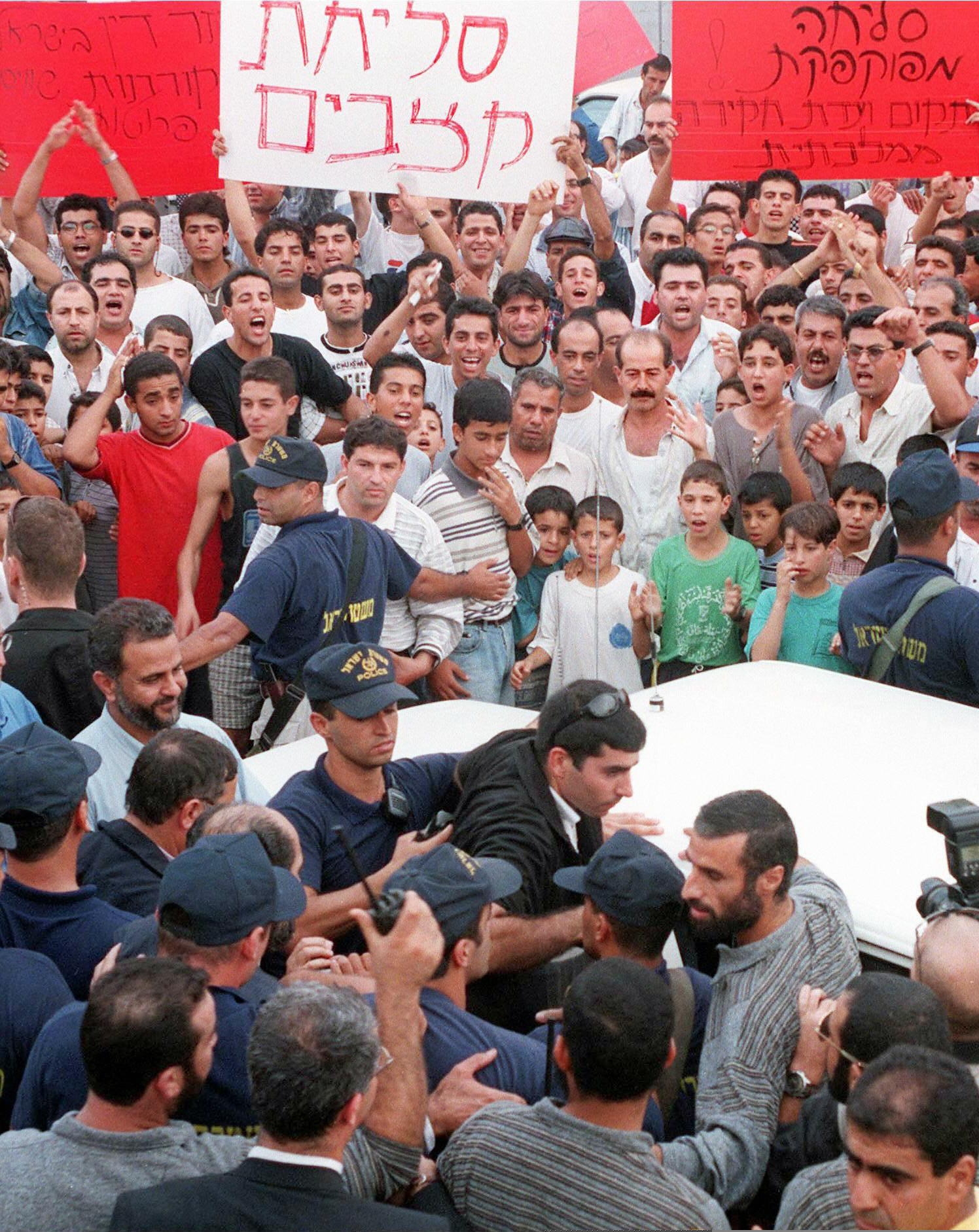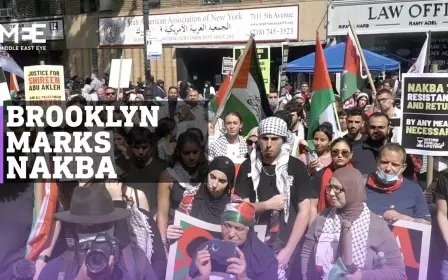Court documents shed new light on Israeli massacre of Palestinians in Kafr Qasem

Declassified documents have revealed fresh details on the planned murder of Palestinian civilians during the Kafr Qasem massacre, when an Israeli commander advised troops that "it was desirable for there to be a number of fatalities".
Fifty Palestinian civilians, including children, elderly residents and a pregnant woman, were killed by Israeli troops as they returned home from work. They had no knowledge the village had been placed under curfew.
According to the trial transcripts of Chaim Levy, who commanded the Israeli army in Kafr Qasem, the troops knew their victims were unarmed civilians who had not been informed about the curfew.
"The same goes for them as anyone else," Levy said he was told by a commander regarding the civilians.
In one exchange during his trial, Levy was asked: "Doesn't your reason tell you that 'violating a curfew' means by someone who knows that there is a curfew?" Levy said he agreed.
New MEE newsletter: Jerusalem Dispatch
Sign up to get the latest insights and analysis on Israel-Palestine, alongside Turkey Unpacked and other MEE newsletters
Later he was asked: "How can you say that someone told you to kill people who don't know that there is a curfew?" To which he replied: "Because I was given such an order... Today I find this unreasonable. At the time, I thought it was reasonable."
Kafr Qasem is a Palestinian village that was taken by Israel after the Nakba in 1948. Palestinians in the village were subjected to military rule and came under constant pressure by Israeli authorities to leave their homes.
At the outbreak of the Suez Crisis on Monday, 29 October 1956, Kafr Qasem, along with other Palestinian villages bordering Jordan, was placed under curfew. That evening, civilians returning home from work were gunned down at close range by Israeli troops.
The massacre sparked international outrage and led to a landmark trial of the Israeli troops. For decades, the Israeli government refused to release transcripts of the court proceedings, saying they jeopardised national security.
The documents also reveal a new link between the massacre and a secret Israeli plan, code-named "Hafarperet" (Mole), to deport Palestinians of the Little Triangle area in central Israel to Jordan.
Levy's testimony offers a detailed account of how Israeli officers appear to have used tensions during the Suez crisis to orchestrate the removal of Palestinians from their villages.
Levy refers to plans of "creating enclosures" and "transporting people," which could be interpreted to mean the detention of Palestinians in camps or expulsion from their homeland.
He also said he was informed by his commander not to station troops along the village's eastern border facing Jordan, in an effort to push fleeing Palestinians out of Israel.
"I understood that it would be no great calamity if they took this opportunity to go away," he said.
Levy said he understood there was a direct link between shooting curfew violators and changing Israel's demographic make-up.
"The connection is that, as a result, part of the population would get scared and decide that it's best to live on the other side. That's how I interpret it," he said.
Casualties were 'desirable'
The testimony of district commander Issachar Shadmi appeared to corroborate Levy's understanding of the massacre. Shadmi said it was no secret Israel "heavily encouraged" Palestinians to leave its borders.
"The killing of a few people as an intimidation measure can encourage movement eastward, as long as we hint to them [the Palestinians] about the movement eastward," he said.
Another Israeli soldier said the intention of the curfew was to intimidate the Palestinians.
"The immediate goal is to keep them in their houses, and the second goal is to not need to intimidate them in the future, as well as to require less manpower because they will eventually be like innocent sheep," one of the soldiers testified.
He added that a major-general in the Israeli army said it would be "desirable" to have casualties to instil fear in the Palestinian population, to which he replied: "It would be best to knock out a few people... so that in the future there would be quiet, and we would not need to have this much manpower overseeing these villages."

The release of the report was welcomed by Palestinian and Israeli lawmakers.
"Today what we said from the first day was revealed: the shocking massacre in Kfar Kassem in 1956 was a deliberate murder, part of a plan to deport the residents of the Triangle," Joint List legislator Aida Touma-Suleiman said.
"The published protocols prove that Israel not only murdered 50 Arab citizens in cold blood but also planned the 'establishment of pens' and the 'transfer of the people,' not only in 1948 but also under the military regime in the 1950s."
Regional Cooperation Minister and Kafr Qasem resident Esawi Freige, who lost relatives in the massacre, said after the release of the transcripts: "I'm finally reading the words I dreamt to read my entire life. The testimonies on this planned murder, on Kafr Qasem's eastern gate that was left open in the hope that the survivors would get the message and run away. But alongside the pain there is peace.
"After 66 years, the truth comes out. For so long, our government wished to hide the truth from us about the massacre that hurt every family in Kafr Qasem, including my family, and this follows us to this day."
This article is available in French on Middle East Eye French edition.
Middle East Eye delivers independent and unrivalled coverage and analysis of the Middle East, North Africa and beyond. To learn more about republishing this content and the associated fees, please fill out this form. More about MEE can be found here.





